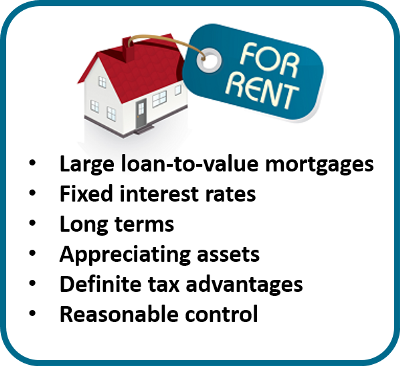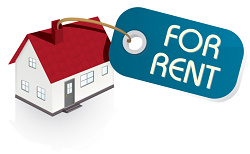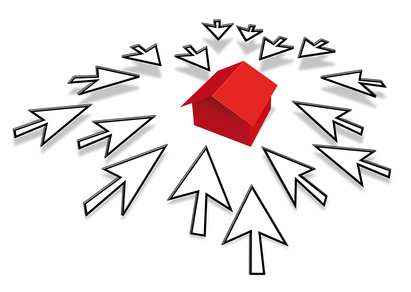Get Ready for College
One of the important things as a parent is to plan for their children’s education. Let’s look at two different approaches: a savings account or investing in rental real estate.
 Assuming your child is five years old and you start putting $250 a month in a savings account earning 2%, in 13 years you’d have $44,497.41 to pay for their college. Anticipating that isn’t going to be enough, you’d have to save $500 a month to end up with $88,995.
Assuming your child is five years old and you start putting $250 a month in a savings account earning 2%, in 13 years you’d have $44,497.41 to pay for their college. Anticipating that isn’t going to be enough, you’d have to save $500 a month to end up with $88,995.
Another way would be to make a lump sum contribution of $20,000 today in a mutual fund earning 5% that would be worth $37,713 in 13 years. You’d have to make a $47,196 initial contribution to end up with the same $88,995.
An alternative to savings would be to invest in a $100,000 home in a good area. Assuming a three percent appreciation and rent of $1,000 a month, an initial investment of $23,500 could have a future wealth position of $83,838 at the end of 13 years.
Obviously, this is just an example of why rental homes are the IDEAL investment providing Income, Depreciation, Equity build-up, Appreciation and Leverage. While rentals certainly have more risk and management than a savings account, they do provide an opportunity for a higher rate of return.
If you’re concerned about paying for college tuition in the future, it is certainly worth investigating the possibility of investing in rental homes today.



 Single family homes for rental purposes offer an excellent rate of return in an investment that most people understand better than other investments. The concept is simple: stay with predominantly owner-occupied homes in a slightly below average price range. In most areas, tenants are easy to find and they’ll usually stay two to three years or more.
Single family homes for rental purposes offer an excellent rate of return in an investment that most people understand better than other investments. The concept is simple: stay with predominantly owner-occupied homes in a slightly below average price range. In most areas, tenants are easy to find and they’ll usually stay two to three years or more. More money has been lost to indecision than was ever lost to making the wrong decision. The economy and the housing market have caused some people to take a “wait and see” position that could cost them in lost opportunities as well as almost certain higher costs in the future.
More money has been lost to indecision than was ever lost to making the wrong decision. The economy and the housing market have caused some people to take a “wait and see” position that could cost them in lost opportunities as well as almost certain higher costs in the future. Usually, when you take money out of an individual retirement account before you reach age 59 1/2, the IRS considers these premature distributions. In addition to owing any tax that might be due on the money, you'll face a 10 percent penalty charge on the amount. This is not the case, however, when you use the money to buy your first investment property. (Note: Technically, you don't have to be purchasing your very first home or building. You qualify under the tax rules as long as you, or your spouse, didn't own a principal residence at any time during the previous two years.) You can use up to $10,000 in IRA funds toward this purchase. If you're married, and you and your spouse are both first-time buyers, you can each pull from retirement accounts, giving you $20,000 to use.
Usually, when you take money out of an individual retirement account before you reach age 59 1/2, the IRS considers these premature distributions. In addition to owing any tax that might be due on the money, you'll face a 10 percent penalty charge on the amount. This is not the case, however, when you use the money to buy your first investment property. (Note: Technically, you don't have to be purchasing your very first home or building. You qualify under the tax rules as long as you, or your spouse, didn't own a principal residence at any time during the previous two years.) You can use up to $10,000 in IRA funds toward this purchase. If you're married, and you and your spouse are both first-time buyers, you can each pull from retirement accounts, giving you $20,000 to use. As a homeowner, you obviously pay for your mortgage but as an investor, your tenant does. Equity build-up is a significant benefit of mortgaged rental property. As the investor collects rent and pays expenses, the principal amount of the loan is reduced which increases the equity in the property. Over time, the tenant pays for the property to the benefit of the investor.
As a homeowner, you obviously pay for your mortgage but as an investor, your tenant does. Equity build-up is a significant benefit of mortgaged rental property. As the investor collects rent and pays expenses, the principal amount of the loan is reduced which increases the equity in the property. Over time, the tenant pays for the property to the benefit of the investor. It isn’t difficult to get into the real estate investing world. In fact, it’s rather easy. But it does require being smart and dedicated—and avoiding easy-to-make mistakes. These tips for a first time real estate investor should be beneficial in helping you become more knowledgeable and competent in sidestepping common pitfalls.
It isn’t difficult to get into the real estate investing world. In fact, it’s rather easy. But it does require being smart and dedicated—and avoiding easy-to-make mistakes. These tips for a first time real estate investor should be beneficial in helping you become more knowledgeable and competent in sidestepping common pitfalls. prices and interest rates, an increased demand for rental property, strong signs of a recovering real estate market, and the continuing volatility of the stock market.
prices and interest rates, an increased demand for rental property, strong signs of a recovering real estate market, and the continuing volatility of the stock market.






